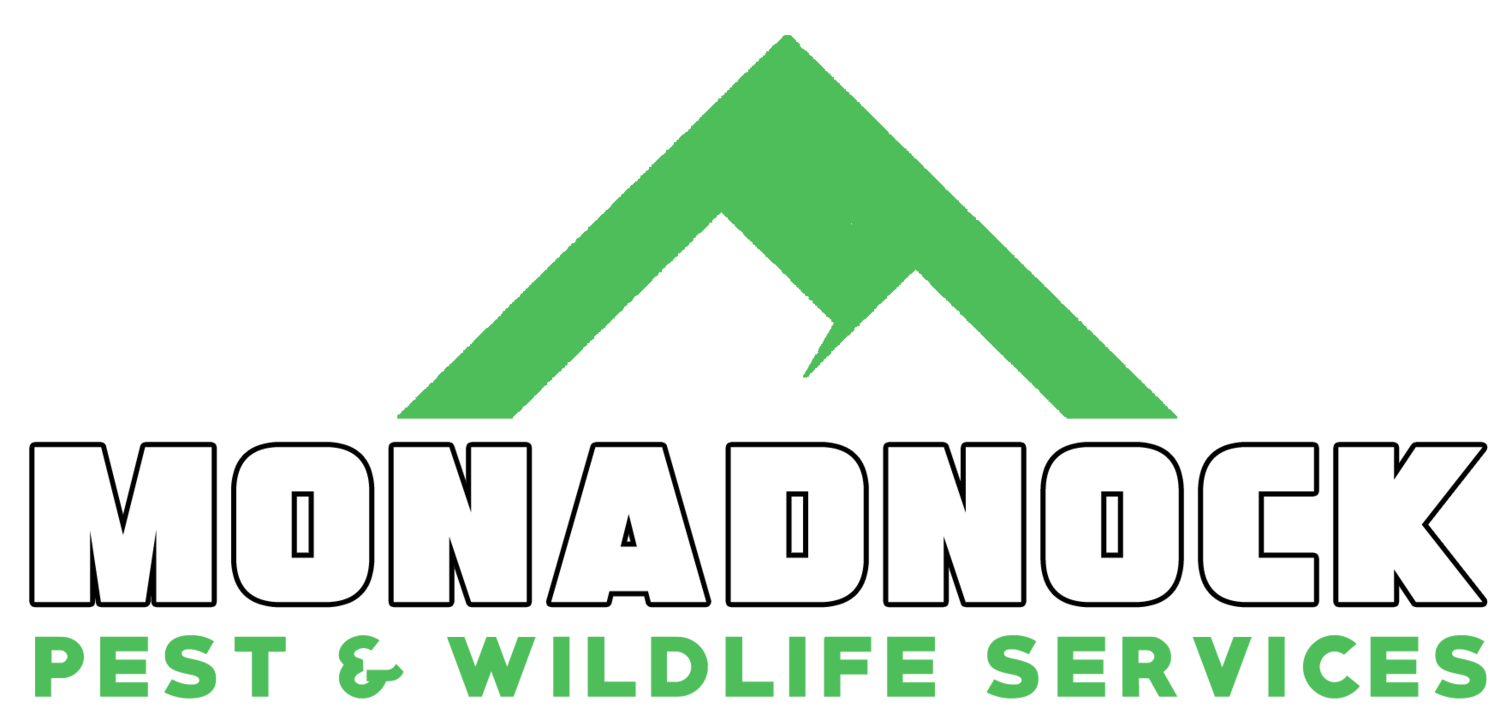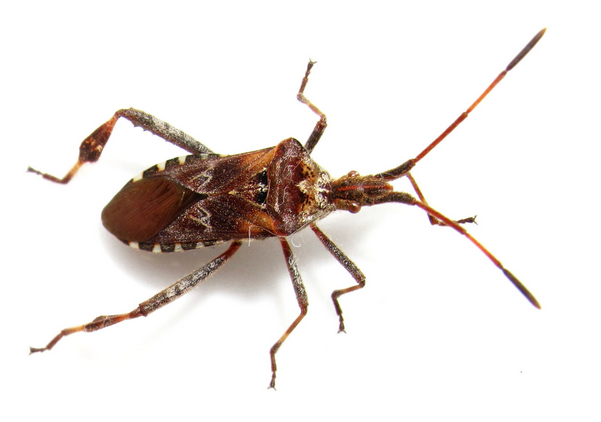A Fall Affair: Know Your Stink Bugs and their “Crawley” Cousins
Western Conifer Seed Bugs, a fairly new invader which originally hails from the western United States, is now a fixture inside New England homes each winter. (Public Domain Image)
The first air of autumn brings several iconic events announcing the changing of the seasons. While the New Hampshire days are still bright and warm, late August tends to spell a temporal shift with cooler nights as residents try to savor every last minute of summer before the leaves begin changing and the fall season rolls in. Apples become ripe for the picking, foliage pops with bright vibrant colors, and the flannel emerges from the backs of closets.
But before Pumpkin-Spice-Everything takes its cultural grasp on the region, leaf-peeping tourists aren’t the only critters invading New Hampshire this time of year – and one class of “invaders” in particular are here for more than stunning New England foliage. As September arrives, many insects are already preparing for their winter hiatus – and the attics and soffits of NH homes are often the targets.
Enter The Invader
I recall early in my career as a pest control professional, when the cluster fly was the primary concern for fall invading swarms. In farm country, rich soil means rich populations of cluster flies - where earthworms are plentiful (earthworms being the primary target of cluster flies as food for their larvae) and the expansive gaps in old farmhouses allow plenty of room for overwintering digs.
Likewise, in urban areas like Manchester, the Boxelder Bug (Boisea trivittata) would wreak comparable havoc, where Boxelder Maple trees were prevalent (of which the tree’s seed production is a primary food source for these insects) and boxelder bugs would “mass-up” in the city’s plethora of old Victorian homes and commercial brick buildings at the first threat of cool weather.
A Western Conifer Seed Bug searches for harborage during a New Hampshire fall day (Photo | Jeff Traynor, A.C.E.)
While species like the Cluster Fly (Pollenia rudis) and Boxelder Bug have been synonymous with swarming seasonally dwellings for decades; others, like the Multi-Colored Asian Lady Beetle (Harmonia axyridis), and the Western Conifer Seed Bug (Leptoglossus occidentalis), are considered a more recent plague to NH homeowners through the fall and winter months inside homes.
By the time the deluge of lady beetles, stink bugs, conifer bugs, boxelder bugs and cluster flies that all mob the sunny sides of NH structures in early fall is realized, many of these species have already entered. This specific grouping of insects are (at least in the pest control industry) referred to as “Fall Invaders”; due to their seasonal drive to enter homes in search of quarter from New England’s harsh winters.
New Kid on The Block
It wasn’t until about the mid-2000’s that a new “Fall Invader” made seasonal waves on the scene – enter the Western Conifer Seed Bug. The western conifer seed bug is a species of true bug (Hemiptera). It is native to western North America (such as California, & Nevada) but has since expanded its range to our coast.
Colloquially referred to as “stink bugs”, the WCSB is actually a separate species all together (though they share lineage with stink bugs). WCSB possesses piercing mouth-parts, which allow it to feed on the sap of pine-cone seeds.
Residents of towns like Amherst were some of the first in the state to bear witness to the fervor of these invasive pests; where pine-rich groves of pine-cone bearing trees supplied ample food for this western invader.
The Western Conifer Seed Bug (Leptoglossus occidentalis) has asserted itself as a distinguished fall pest; announcing its invasion by clinging to the sides of homes in search of warm digs to survive the cold winter. Their presence inside can be overwhelming for otherwise unsuspecting homeowners who had no intent (or awareness) of sharing their home with this tiny invader through the season.
As mentioned, the WCSB is not native to the area; but rather, an invasive species from (as the name implies) the western United States. As many a homeowner has discovered, they are sizeable in appearance, they are able to fly (making a loud buzzing noise when airborne), they are invasive (showing up at times in masses), and they do stink!
Not All Stinkers Are Alike
A Brown Marmorated Stink Bug perches on a New Hampshire home. (Photo | Jeff Traynor, A.C.E.)
Despite their uncanny ability to emit a foul-smelling defense spray – which has caused them to incorrectly be referred to as “stinkbugs” – this particular invader, while similar, is not actually a Stinkbug.
While sharing the same insect order of true bugs known as Hemiptera, the WCSB is in a separate family from Stinkbugs. Key differences between the two include shape and body size, as the WCSB is more slender and elongated, while true stinkbugs are “stubbier” - shaped like a shield or badge.
Consequently, the defense odor of Stinkbugs is also far more potent.
Once inside however, as far as the general homeowner is concerned, the two species’ burdensome presence inside the home is the same – with both species, as well as their Order-mates the Boxelder Bug, all seeking winter refuge inside the gaps and voids of our homes.
As with most creatures, their yearly abundance is primarily dependent on food sources. As feeders of sap from developing conifer cones, the greater yearly abundance of pine-cones is likely to dictate the abundance of WCSBs.
Another factor – the weather – will also determine their presence; as warm August days quickly transitioning to a cold-killing frost in September is likely to limit the number of “survivors” who find their way inside structures.
Alas, 2021’s fall transition had given these “fall invaders” plenty of fair warning, with nightly cool temperatures transitioning back to warmer days throughout September and early October sounding the “bug alarm” to seek structural shelter.
As mentioned, stinkbugs and Western Conifer Seed Bugs are joined by other fall invading insects, such as Cluster Flies, Lady-beetles, and fertilized Paper Wasps all making a bid to share your home’s attic spaces over the winter.
A Reoccurring Theme
Similar to WCSB’s invasive takeover, the late 1990s proved a similar bout from Multi-colored Asian Lady-beetles – the slightly larger non-native counterpart to their more culturally known lady beetle (ladybug) cousins.
Monadnock Pest field professional, Fred, treats a home’s eaves against covered pests. (Photo | Jeff Traynor, A.C.E.)
Introduced from Asia both purposefully (for control of crop pests such as aphids) and accidentally into the United States during the twentieth century, these beetles quickly became seasonal pests of their own in New England; known for massing up in large clusters inside NH homes.
While their presence is benign, the true frustration of these insects’ presence is their gradual emergence into finished living spaces.
As inside temperatures remain warm, these confused and staggered stowaways think spring has sprung – in turn causing them to venture further into your “personal” space.
These creatures thankfully pose no major health threats to you or your home, and are regarded more so as a nuisance than anything else.
What Can You Do?
Offense is the best defense with regard to fall invading insects; as once inside, there’s little to be done short of vacuuming up your wayward house-guests.
Preplanning includes caulking and sealing exterior trim & structure gaps, especially on the sunny sides of homes. Ensure screens for vents and windows are secure, and don’t doddle when it comes time to pull those portable AC units from windows as nights turn cool.
An application to structure gaps with an appropriately labeled insecticide at the end of August may also help reduce entry, if applied in a timely manner before “the invasion” begins.
Need assistance with Fall Invaders? Drop us a line and let Monadnock Pest & Wildlife Services chill things out. Read more about the services we offer: Fall Invader Services




